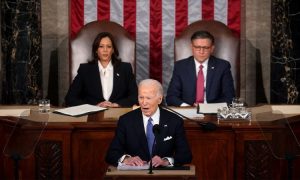<?xml encoding=”utf-8″ ?????????>
The UK’s unemployment rate has climbed to its highest level in nearly a year, as the number of job vacancies continues to shrink, according to the latest figures from the Office for National Statistics (ONS).
From January to March, the unemployment rate rose to 4.3%, the highest since the period from May to July last year. The decrease in job vacancies has intensified competition among job seekers, indicating a cooling job market.
Between February and April, job vacancies fell by 26,000, totalling 898,000. Although this figure remains above pre-pandemic levels, Liz McKeown, Director of Economic Statistics at the ONS, noted: “With unemployment also increasing, the number of unemployed people per vacancy has continued to rise, approaching levels seen before the onset of Covid-19.”
This rise follows a previous rate of 4.2%, with McKeown adding, “We continue to see tentative signs that the jobs market is cooling.”
Despite the challenges in the job market, wage growth has remained steady at 6%, defying expectations of a slowdown to 5.9% for the first quarter of the year. This wage growth continues to surpass inflation, which stood at 3.2% for the year to March.
Chancellor Jeremy Hunt acknowledged the benefit of rising wages in alleviating cost of living pressures on families. He expressed optimism about overcoming labour supply challenges, citing upcoming reforms in childcare, pensions, and welfare as potential catalysts for increasing employment rates.
However, Labour’s Acting Shadow Work and Pensions Secretary, Alison McGovern, criticised the government’s handling of the situation. She stated, “These damning new figures prove that things are just getting worse,” and highlighted the impact of long-term sickness and NHS waiting lists on the workforce.
The rate of economic inactivity, defined as individuals aged 16 to 64 not in work or seeking employment, slightly decreased to 22.1% in the first quarter. The ONS attributed this to an increase in temporary sickness, long-term sickness, or retirement.
The ONS cautioned that these figures are based on a smaller sample size of household questionnaires than before the pandemic, urging a degree of caution in interpreting the data.
Interest Rates and Wage Growth
While overall pay growth, excluding bonuses, remained steady between January and March, it slightly declined to 5.9% in the private sector. Adjusted for inflation, wages grew by 2.4%.
The Bank of England will closely monitor these wage figures to inform its decision on interest rates. The next rate-setting meeting is scheduled for June, with additional key economic indicators, including April’s wage data and inflation rates, expected to influence the decision.
Ashley Webb, UK Economist at Capital Economics, suggested that despite a slight easing in wage pressures, overall wage growth remains robust. This may cause the Bank to hesitate in reducing interest rates immediately.
Bank of England Governor Andrew Bailey expressed cautious optimism, stating, “I am optimistic that things are moving in the right direction,” but emphasised that a reduction in borrowing costs is “not a fait accompli.” Interest rates have been maintained at 5.25% since last August, the highest in 16 years.

























